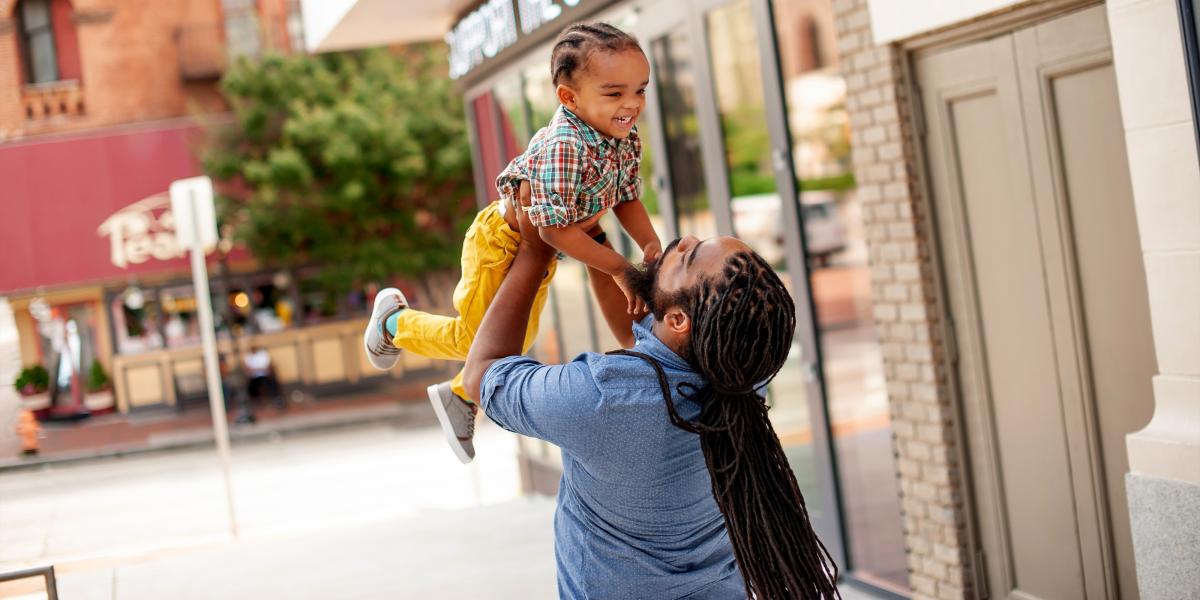CCP Reimagines Its Future
The Johns Hopkins Center for Communication Programs relies on its “small but mighty” ethos to navigate a future without USAID.
In a portfolio of work with dozens of countries, the Johns Hopkins Center for Communication Programs (CCP) projects in their Baltimore backyard were an outlier.
Now, amid devastating USAID funding losses, these local efforts—and their diverse funding sources—might provide a roadmap for the Center’s future.
“A lot of the best practices we’ve used globally are totally relevant to what we do domestically or what we could be doing,” says Debora B. Freitas López, MS, CCP’s executive director.
The Center is exploring new paths forward after losing 90% of its funding, a figure that was roughly $100 million annually before the cuts. Staff now stands at about 200 people worldwide, down from around 700 two years ago. The turmoil has pushed leaders to reimagine where and how they can apply the organization’s life-changing knowledge and behavioral health work.
“We might not look the same, but I think this is part of our evolution,” Freitas López says.
CCP formed in 1988 at the Bloomberg School with the goal of harnessing social and behavioral change to improve individuals’ lives worldwide. From one of the first HIV awareness campaigns in South America to spreading malaria net information in Africa to women’s empowerment work in the Middle East, their efforts impacted health knowledge and practices for billions of people across the globe
“The kind of work they have done is what I would call a public good,” says Ellen Starbird, MA, the retired director of USAID’s Office of Population and Reproductive Health. “The work has always been really tied to the reality on the ground, and how messages can be communicated in a particular setting.”
Diversify Funding
To keep that critical work alive, CCP must seek new funding sources—a goal Freitas López had identified when she joined the Center two years ago. Wrapping up its largest USAID-funded project, Breakthrough ACTION, underscored the need to diversify.
“Having different funding mechanisms allows us to try different things, to be more innovative and more creative,” Freitas López says.
An ongoing project in Ethiopia, which is funded by the Mastercard Foundation, offers a model of what that approach might look like. Community Service as a Pathway to Work, launched in 2023, addresses youth unemployment. In the country’s urban areas, people ages 15–29 experience a 27% unemployment rate, with the rate twice as high for young women than for their male counterparts. Struggles to find work clearly have mental—and physical—health impacts, says Simon Heliso Kuka, DBA, PhD, MA, Hopkins’ country representative there.
“These unemployed youths can become violent, creating a circle of insecurity and joblessness,” he says.
The project helps connect young people, especially young women, with community organizations as volunteers in schools or local businesses. The goal is to establish important job pathways. In the second year of the project, at least 40,000 youth are involved in community service efforts.
Already, Kuka has seen a young nurse midwife who spent several months volunteering in a rural health facility, gain paid work as a nurse. Other youth have launched small businesses such as furniture-making while others have found jobs in the construction sector.
Build on Local Success
CCP’s Baltimore initiatives offer another possibility. Through B’more for Healthy Babies (BHB), the Center has worked with the Baltimore City Health Department and multiple local partners to reduce infant mortality rates and improve maternal, child, and family outcomes.
Diverse community partners —including hospitals, governments, and community-based agencies—have helped sustain the program. Since the initiative was launched in 2009, the city has experienced a 44% decline in infant mortality, according to BHB data.
This longstanding Baltimore model could be replicated in other Maryland counties and even nearby states, says August Summers, PhD, RD, CHES, the Hopkins lead for the project. The knowledge and messaging lessons learned through decades of international work could be used to benefit local communities.
“We know that there isn’t a one size fits all,” he says. “We think about culture, history, and how we can tailor materials and training to the very specific needs of who we are serving.”
Play a Different Global Role
Internationally, CCP also has been reimagining how it works with on-the-ground partners, with those groups assuming the lead role. There’s a model for that approach with Center for Communication and Change – India, a sister organization that spun off from CCP in 2012. CCC-I leads local project implementation while the Hopkins team offers technical expertise on social behavior change and knowledge management in areas such as noncommunicable disease, mental health, and climate change. Local connections may pave the way for different funders, such as India-based foundations, corporate social responsibility efforts, and hospitals who might prefer a local lead, says Sanjeeta Agnihotri, MSW, CCC-I director.
“This is the right time to transition to work with local funding partners and not rely solely on international funding partners for every piece of work we do,” she says. “That’s the way forward for us.”
That approach is not without challenges, though. While local donors appreciate the global expertise organizations like CCP bring to the table, they often don’t have a sufficient budget to support the overhead and staff that comes with international partners, she says.
“If CCP is able to work around that, there’s potential for a lot of work in India, especially with foundations, hospitals, and corporate social responsibility,” Agnihotri says.
It is undoubtedly a tough road ahead with so many organizations across the globe losing money at exactly the same time. But CCP staff are determined to reimagine their work in this altered international landscape.
“We’ve always had this small but mighty mentality anyway, where we do a lot with little,” Freitas López says.
